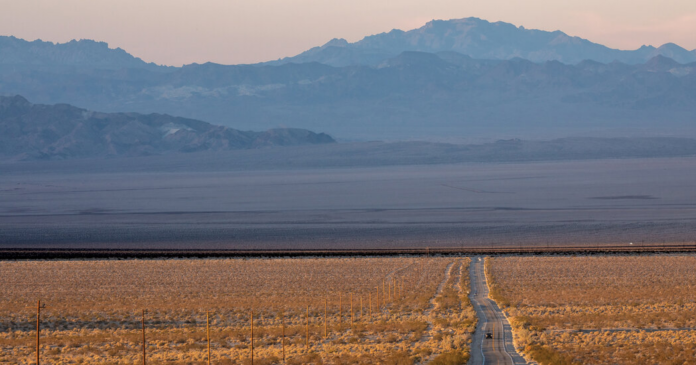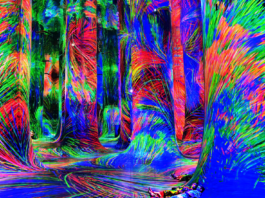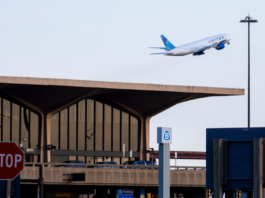CALIFORNIA
I BURST OUT of Arizona into Nevada, through the brown-painted hills of the Mojave Desert and into California. I was answering a physical need to give a face to the names of certain places that were now imprinted on my mind: the bare, sunlit mountains of Nevada; the shimmering mirage of Las Vegas; the bleached decrepitude of the Inland Empire, a treeless island of asphalt and heavily tinted glass. These mental pictures settled my idea of America, my adoptive country, turning the abstract into reality. We think we know a place, in the same way we sometimes feel we have read certain famous novels, but there is no substitute for watching land go by. The stamina, endurance and, at times, monotony are not incidental to the experience; they are the point. They change us not for what we might later say about them but because we went through them, because we turned every page. I had driven some 2,900 miles in the past week and, on a misty afternoon in the eucalyptus-scented hills of Santa Barbara, all dark green and turmeric, I caught my first hazy glimpse of the Pacific Ocean.
In California, I wanted to chase down the ghosts of old émigrés. I’d felt an immediate kinship with that wave of English and German artists, writers and musicians — Adorno, Bertolt Brecht, Aldous Huxley, Christopher Isherwood, Thomas Mann and Arnold Schoenberg — who left Europe in the 1930s and early 1940s and went the additional 3,000 miles past New York to California. They must have come for reasons as concrete as nice weather and the job opportunities in Hollywood, but a part of me fancied they had come to be free of the past and for the illusion of a terra nullius that California offered. It sat on the frontier, an Eden of riches and fruit trees, exerting a creative power over the American imagination. It was a social laboratory where, even within the American context, the world was being imagined anew. The exiles did not want an imitation of Europe on the East Coast but wanted to turn their backs on the Old World once and for all. I imagined them relishing the feeling of standing at the edge of the West, having gone as far as it was possible to go, watching the sun sink over the Pacific.
“Once you get to the ocean,” the nun Pravrajika Vrajaprana said to me as we sat in the Santa Barbara bookshop of the Vedanta Society of Southern California, looking out on a day that refused to materialize, “you have that sense of the infinite in front of you.” Dressed in a saffron shirt, her cropped hair white, she had greeted me earlier by saying, “It’s Joan Didion weather,” referring to the Santa Ana winds Didion had so famously written about in an essay in “Slouching Towards Bethlehem” (1968): “The winds show us how close to the edge we are.” They brought destruction to this part of the world in their role as an essential aliment to fire, which would erupt only months after my trip, burning to the ground so many of the places that I was to see for the first and last time. “It’s a place of extremes,” Vrajaprana said, looking up almost fearfully at the surrounding hills. “It feels so lovely and kind here right now, until there’s a fire.”
If rootedness and belonging was my theme, I was in the right place. India had taken deep root in California. Indian spirituality, with its emphasis on the interconnectedness of life, was an important check on the hubris of American individualism and biblical notions of how the world had been given by God to man to have dominion over. California was also a land of plunder, a place where rampant capitalism had merged with unrealistic fantasy. “Their dreams were yours, their dreams were mine,” sings the cast of Andrew Lloyd Webber’s 1993 musical, “Sunset Boulevard,” about those greedy gold rush pioneers in their covered wagons, “but in those dreams were hidden dragons.” In a place where dreams of stupendous wealth and fame routinely turn to ash, I wondered if Indian philosophy provides a special comfort.
Vrajaprana pointed to the invasive eucalyptus (“It turns into a bomb when there’s a fire”), comparing it unfavorably with the indigenous scrub oak, which grows back and protects, then to the Southern Indian-inspired Vedanta Temple, designed by Lutah Maria Riggs in the 1950s, which — unlike the former Jesuit building downhill — observes the contours of the land, using pine telephone poles as pillars. What she kept hinting at was the tension between what makes one transplantation a success, another a failure. California is all possibility, all freedom, a place where old roots can find new soil.



